The 8 Best Things Texans Should Plant in October
As October sweeps across the Lone Star State, it’s time for Texans to roll up their sleeves and get planting. But what should you be sowing in this delightful autumn month? Well, fear not, because we’ve got you covered with a solid list of the best things for Texans to plant in October! Whether you’re a seasoned green thumb-haver or just experimenting a bit with the broad world of gardening, this article is your guide to the best plants to put in the Texan soil this October.
1. Cabbage
Planting cabbage in October in Texas is an excellent choice for several reasons. Cabbage is a cold-hardy vegetable that thrives in Texas’s mild winter climate, particularly in hardiness zones 7 to 10. Its adaptability to these zones makes it a reliable choice for fall planting.
Cabbage offers numerous benefits for both gardeners and consumers. It’s a nourishing addition to your diet since it’s high in dietary fiber, vitamins C and K, and both. It is a useful ingredient because of how many different dishes it can be used in, from stir-fries to coleslaw. Furthermore, cabbage is a crop that requires little maintenance because of its resistance to pests and illnesses.
Timing is crucial when growing cabbage. Planting in October allows it to establish strong roots before winter. Space cabbage plants about 18 to 24 inches apart in well-drained soil with good organic matter content. They require full sun exposure for optimal growth. Adequate water, about one-and-a-half inches per week, is essential during dry periods.
Cabbage typically matures within 70 to 120 days, depending on the variety. In Texas, you can expect to harvest cabbage from late December to early March, depending on when you planted. Look for firm, compact heads with vibrant green leaves. When they reach a size of five to seven inches in diameter, it’s time to harvest. Cut the head just above the lowest set of leaves, ensuring you leave the root in the ground for potential regrowth or to enrich the soil.
Remember to provide the right growing conditions, maintain consistent watering, and harvest at the appropriate size for a bountiful cabbage crop in the coming months.
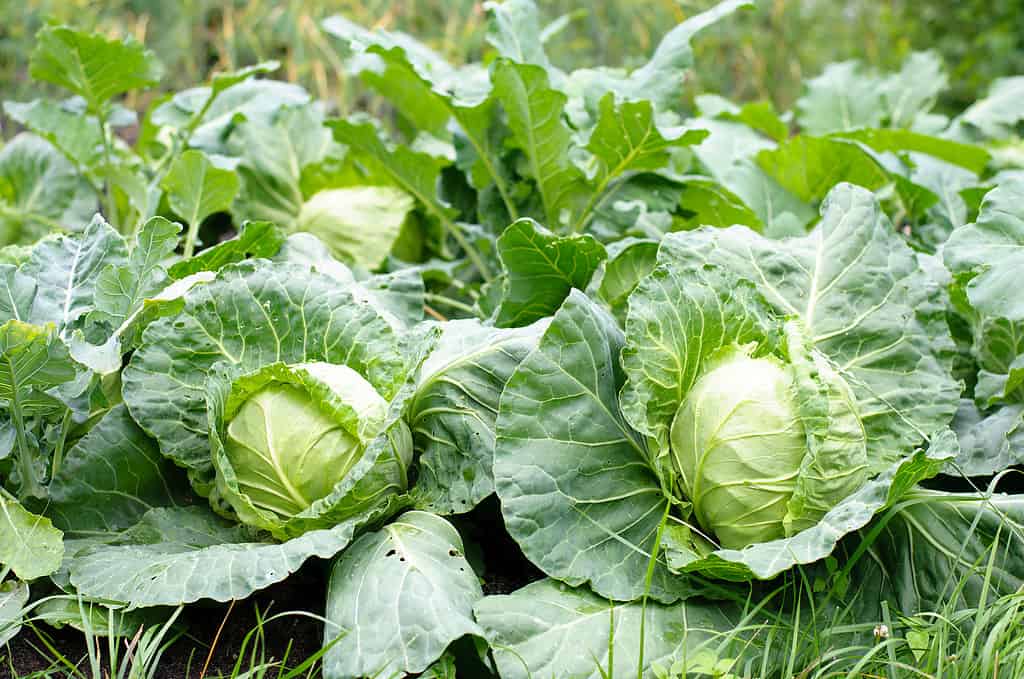
©iStock.com/Lusyaya
2. Cauliflower
Planting cauliflower in Texas during October is a strategic choice, primarily due to its adaptability to the state’s climate and the many benefits it offers. Cauliflower flourishes in Texas hardiness zones 7 to 10, making it well-suited for fall planting.
The vegetable cauliflower is both healthy and adaptable. It contains a lot of vitamins C and K, which are crucial components for a balanced diet. It may be used as a component in a variety of cuisines, from creamy cauliflower soup to grilled cauliflower steaks, thanks to its mild flavor and crisp texture.
Timing is key when growing cauliflower in Texas. Planting in October allows the cauliflower to establish strong roots before winter sets in. Ensure you choose a sunny spot in your garden with well-drained, fertile soil. Adequate watering and soil enrichment with compost or organic matter will promote healthy growth.
Depending on the type you pick, cauliflower normally takes 70 to 100 days to reach full maturity. Depending on when you planted your cauliflower in Texas, you can anticipate to harvest it from late December to early March. The best indicator for harvesting cauliflower is the size of the head. Harvest when the head reaches six to eight inches in diameter and is compact and firm. Delaying the harvest can result in a bitter taste or “ricey” texture.
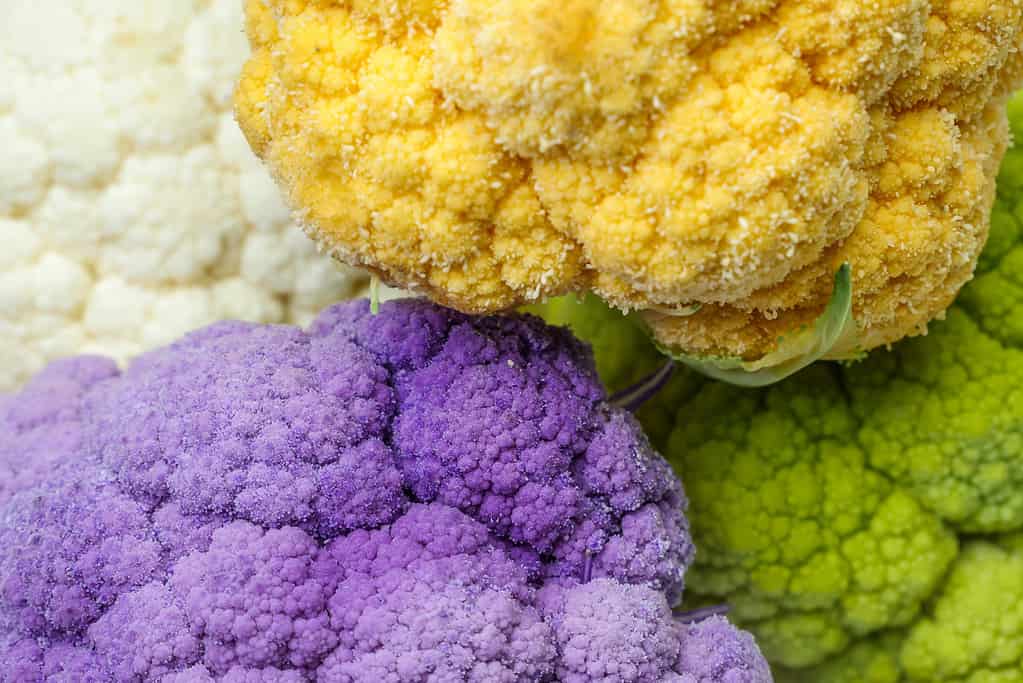
©Animaflora/iStock via Getty Images
3. Kale
Planting kale in October in Texas can be a smart gardening choice, thanks to its suitability for the region’s climate, versatile health benefits, and the timing of its planting. Kale thrives in various hardiness zones, particularly zones 7 through 10, making it well-suited for fall planting in Texas.
Kale is a nutritional powerhouse. It’s rich in vitamins A, C, and K, as well as minerals like calcium and iron. These nutrients contribute to its reputation as a superfood, promoting overall health and immune support. Its robust and slightly peppery flavor makes it a valuable addition to salads, smoothies, and cooked dishes.
October is an ideal time to plant kale in Texas because it allows the plant to establish strong roots before colder weather sets in. Choose a sunny location in your garden with well-draining soil. Kale is relatively low-maintenance, but it benefits from regular watering, especially during dry spells.
Harvesting kale is simple and can begin as early as 30 to 65 days after planting, depending on the variety. The leaves can be harvested when they reach a desirable size, typically around six inches in length. It’s essential to pick the older, outer leaves first, which encourages the growth of younger leaves and prolongs your harvest. Kale can be continuously harvested throughout the fall and winter months in Texas, as it becomes more cold-tolerant and even sweeter after a light frost.
Growing kale can be a gratifying experience, giving you a consistent supply of this nutrient-rich leafy green throughout the cooler months, whether your goal is to improve your diet or increase the production of your garden.
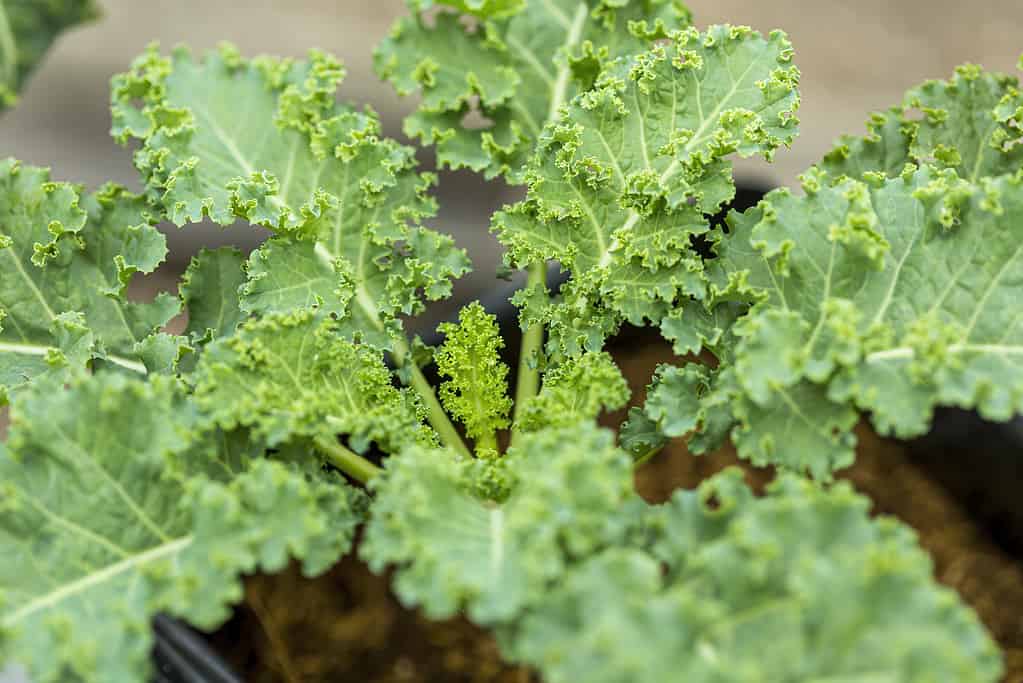
©Thirawatana Phaisalratana/iStock / Getty Images Plus via Getty Images
4. Lettuce
Given its compatibility with the temperature of the area, health benefits, and the advantageous timing of its planting, lettuce has a number of advantages when grown in Texas in October.
Lettuce is a healthy leafy green that is high in folate, vitamin A, and vitamin K. It is a beneficial complement to a balanced diet due to its low calorie and high fiber content. It’s also renowned for its adaptability, acting as both a crisp topping for sandwiches and burgers and as the base for salads.
October marks an optimal time to sow lettuce seeds in Texas. The moderate temperatures and decreasing heat of the fall season create favorable conditions for lettuce growth. Select a location in your garden that receives partial sun, as lettuce prefers cooler, partially shaded environments. Consistent moisture and well-draining soil are essential for successful lettuce cultivation.
Lettuce can be harvested when the leaves reach a size suitable for your culinary needs. You can start picking outer leaves as soon as they are large enough to use, usually within 30 to 50 days after planting. For a full head of lettuce, allow it to mature for around 70 to 90 days. Harvest by cutting the entire plant at the base, or pick individual leaves, allowing the center leaves to continue growing.
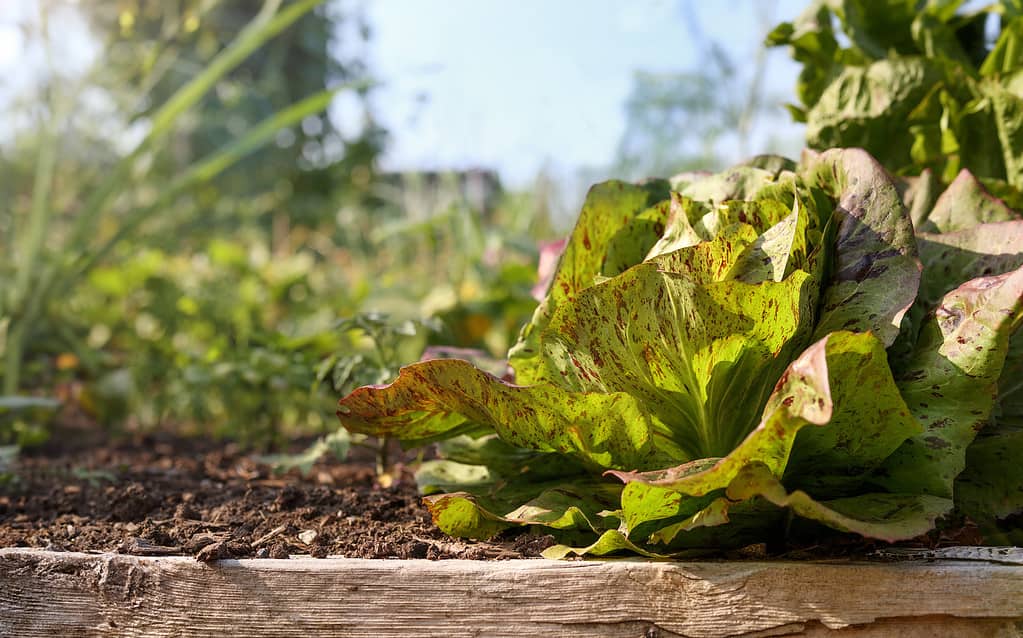
©Petra Richli/iStock via Getty Images
5. Spinach
Planting spinach in Texas during October is a wise decision, as it aligns perfectly with the region’s climate and offers a host of nutritional benefits.
Choose a spot with some full light as well as well-draining, fertile soil if you want to grow spinach effectively. To increase moisture retention and nutritional content, modify the soil by adding organic material, such as compost. Directly sow spinach seeds into the ground in rows, one to two inches apart, and cover them with a thin layer of soil. Adequate spacing ensures good airflow, reducing the risk of fungal diseases.
Spinach is a nutritional powerhouse, boasting high levels of vitamins A and K, along with iron, calcium, and antioxidants. Consuming spinach regularly can contribute to improved overall health, strengthened immune function, and better bone health. Its tender, green leaves are a versatile addition to salads, smoothies, and cooked dishes.
Spinach can be harvested when the leaves reach a desirable size, typically within 40 to 50 days after planting. Pick the outer leaves first, leaving the inner leaves to continue growing. Harvesting can be ongoing throughout the fall and winter months in Texas, as spinach becomes more cold-tolerant and even sweeter after a light frost.. By providing the right growing conditions and timely harvesting, you can enjoy a steady supply of fresh and healthy spinach throughout the cooler months in Texas.
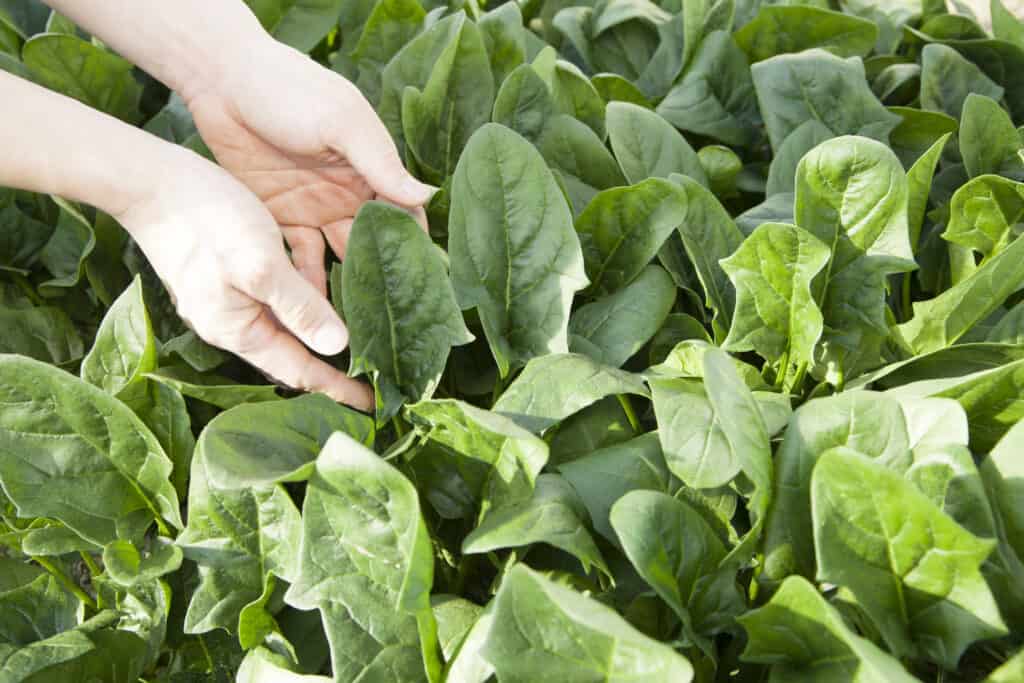
©iStock.com/okugawa
6. Tulips
Planting tulips in October in Texas can be a rewarding endeavor, although it comes with some challenges due to the state’s climate. With proper care and selection of suitable varieties, you can enjoy the vibrant blooms of tulips in the spring.
When planting tulips in Texas, consider a few key tips to ensure success. Choose a location that receives full to partial sunlight, as tulips require adequate light for healthy growth and flowering. Well-drained soil is essential, as tulip bulbs are prone to rot in waterlogged conditions. To enhance drainage, you can mix sand or perlite into the soil. It’s advisable to plant tulip bulbs at a depth of about six inches, allowing them to withstand temperature fluctuations better. Space the bulbs at least six inches apart to provide adequate room for growth.
Selecting the right tulip varieties is crucial for Texas’s climate. Some recommended varieties include Darwin Hybrid tulips, Triumph tulips, and Species tulips. These varieties are known for their resilience to warmer climates and adaptability to Texas conditions.
Tulips offer several benefits, primarily their stunning and vibrant blooms that add a burst of color to gardens in the spring. They come in various colors and shapes, allowing for creative landscaping and floral arrangements. Additionally, tulips are relatively low-maintenance once established, making them an attractive choice for gardeners.
Harvesting tulips is different from harvesting vegetables. Tulips are typically grown for their ornamental value rather than for consumption. When the tulip flowers have fully bloomed and begin to wilt, you can cut the flowers at the base of the stem to enjoy them indoors as cut flowers. However, leave the foliage intact until it turns yellow and withers naturally.

©Sergey V Kalyakin/Shutterstock.com
7. Daffodils
Planting daffodils in Texas during October is a strategic choice for gardeners seeking vibrant spring blooms. Daffodils, known for their cheerful yellow or white flowers, are hardy and thrive in the mild Texan winters.
When planting daffodils, follow these essential tips for success. Choose a sunny to partially shaded location in your garden, ensuring the soil is well-drained. Daffodils prefer slightly acidic to neutral soil with a pH level of around 6.0 to 7.0. Plant the bulbs at a depth of about 6 inches, with the pointed end facing upward. Space them approximately three to six inches apart, allowing for good air circulation and avoiding overcrowding.
Consider planting different daffodil varieties to create a diverse and visually appealing garden display. Some popular options include ‘King Alfred,’ ‘Tête-à-Tête,’ and ‘Narcissus poeticus.’ These varieties offer various flower sizes and colors, allowing you to personalize your garden.
Daffodils provide several benefits aside from their stunning blooms. They are known for their resilience and ability to naturalize, meaning they multiply and return year after year with minimal care. Additionally, they are deer-resistant, making them an excellent choice for gardens where deer may be a nuisance. Daffodils also attract pollinators like bees, which can benefit your entire garden ecosystem.
When it comes to harvesting daffodils for flower arrangements, it’s essential to exercise caution. While the blooms are beautiful, the stems, leaves, and bulbs contain toxic compounds. If you’re interested in growing bouquets, cut the flowers as near to the stem’s base as you can. Cutting more than one-third of the foliage should be avoided since the leaves are essential for recharging the bulb’s vitality for the following growth season.

©Andrew Fletcher/Shutterstock.com
8. Cilantro
Planting cilantro in Texas during October is a smart gardening choice, given the favorable fall conditions in the state. Cilantro, also known as coriander, is a popular herb known for its vibrant flavor and numerous culinary applications.
To successfully grow cilantro in Texas, there are some important planting tips to keep in mind. Choose a location that receives partial to full sun, as cilantro thrives in well-lit areas. Ensure the soil is well-drained and enriched with organic matter. Cilantro prefers slightly alkaline soil with a pH level around 6.5 to 7.0. When planting cilantro seeds, sow them about a half inch deep and space them six to eight inches apart. This allows sufficient room for the plants to grow and develop.
When it comes to cilantro varieties, consider options such as ‘Santo,’ ‘Slow Bolt,’ or ‘Delfino.’ These varieties are known for their ability to resist bolting, which is when cilantro prematurely produces flowers and seeds instead of lush foliage. In Texas, the heat can induce bolting, so choosing bolt-resistant varieties is essential for a prolonged harvest.
Cilantro has several advantages, chief among them its unique and zingy taste, which improves a variety of foods like salsas, curries, and Mexican food. Just as well, cilantro contains a lot of nutritional fiber, vitamins A and K, and both. It also possesses antioxidant properties and may aid in digestion.
Harvesting cilantro is a straightforward process. You can begin harvesting when the plant reaches about eight inches in height, usually within 45 to 70 days after planting. Trim the outer leaves with a pair of scissors or shears, leaving the central leaves untouched to continue growing. Regular harvesting promotes bushier growth and prolongs the harvest period.
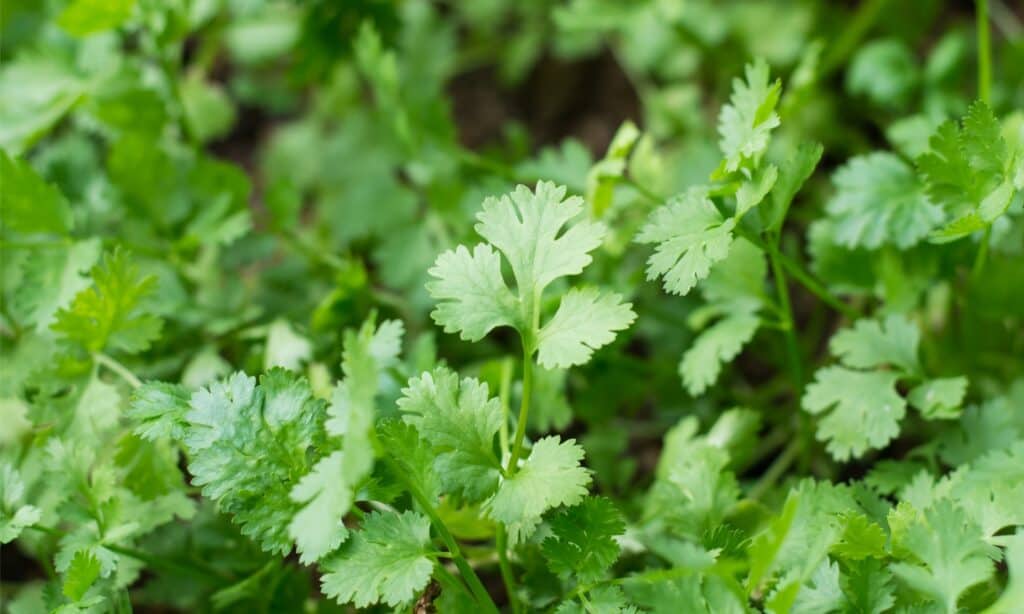
©iStock.com/Tevarak
Summary of the Best Things Texans Should Plant in October
| # | Plants | Water Needs |
|---|---|---|
| 1 | Cabbage | High |
| 2 | Cauliflower | High |
| 3 | Kale | High |
| 4 | Lettuce | High |
| 5 | Spinach | High |
| 6 | Tulips | Low |
| 7 | Daffodils | Low |
| 8 | Cilantro | High |









